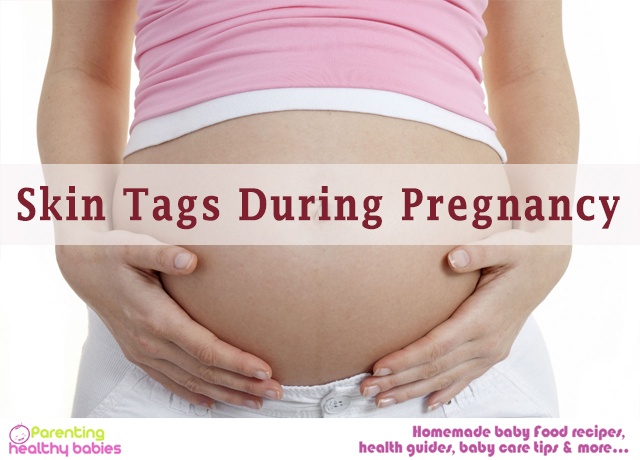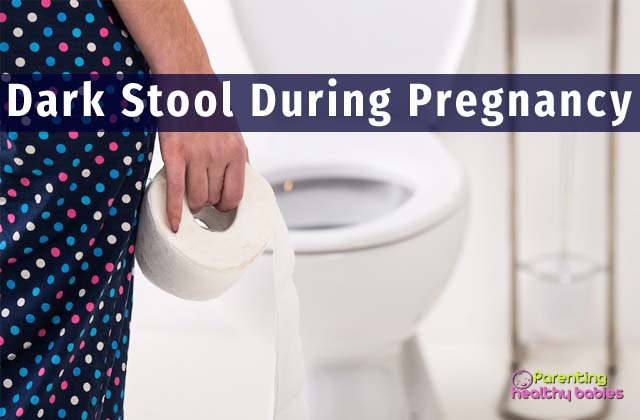Most skin tags tend to go away in time or after delivery, for those that don’t, you might want to see a dermatologist. Pregnancy can change your body many folds, aside from the fact that you have a baby bump. Most women do expect stretch marks or spider veins on their skins. However, pregnancy skin tags are a whole different story altogether and may come completely out of the blue.
A Guide for Skin Tags During Pregnancy
So, the question is, what exactly is a pregnancy skin tag? Well, they’re small skin growths on the surface. They are tiny. Just a fraction of an inch to be precise. Usually, the color of the skin, or just a little darker, these skin tags aren’t dangerous, but they can be quite annoying.
These skin tags mostly occur on parts of the body, such as the face and neck, that too, on the sides. Other possible places are the upper chest, between or beneath the breasts, around the groin or even underarms.
Although a woman may not have these tags before her pregnancy, there are all the chances of developing them during or after her pregnancy. What this means is that pregnancy seems to affect these skin tags. For example, if a woman already had skin tags before her pregnancy, we could see an increase in them, right after pregnancy. This increase could be either in number or perhaps in size, most of which occurs in the second half.
Pregnancy skin tags: Causes
Skin tags in a normal person may be explicable as a result of diabetes or obesity. But, what about a pregnant woman? The answer is quite obvious, don’t you think? It’s mostly because of the hormonal changes a woman undergoes during her pregnancy. The hormones are said to stimulate a kind of hyperactive skin cell growth in the top layers.
One other possibility is when the hormonal activity occurs along with the extra weight gain due to the baby inside. This is supported by the fact that these skin tags occur at or during a later stage of pregnancy.
Pregnancy skin tags: Types
Skin tags in pregnant women could also possibly cause a range of other skin problems such as rashes. These rashes are of two types:
- Specific Dermatoses
These are rashes occurring only in a pregnant woman. Herpes gestationis, impetigo herpetiformis, pruritic urticarial papules and plaques of pregnancy are some of the most common ones. - Severe itching without rashes
Severe itching without rashes during pregnancy can also be caused by intrahepatic cholestasis of pregnancy or ICP, or also due to mild jaundice.
Pregnancy skin tags: Treatment
Although most skin tags tend to go away in time or after delivery, for those that don’t, you might want to see a dermatologist. The dermatologist just cuts off the dangling skin. Freezing it might also help, and it’s faster too!
So, here’s what you can do.
• Surgery
This is what your physician may recommend. A procedure which removes the tag with the help of a scalpel. Of course, this does involve a certain amount of anesthesia and a little bit of downtime.
• Cryotherapy
As mentioned earlier, freezing is a faster alternative. Although it does require more than just ice cubes. The application of a liquid nitrogen compound to the affected parts might be necessary. However, this procedure may not be suitable for everybody and can only be conducted on people with lighter skin or those with little hair growth on their skins.
• Cauterization
The skin tag can also be burnt off. However, this should not be attempted alone or at home and must be conducted only by a professional. The process of electrocauterization uses a special tool, which when heated and applied to the tag, makes it come off, maybe not immediately, but within a few hours or days.
• Tying a string
This is especially helpful if the skin tag is elongated. A sterile string is tied around the base, which helps cut off blood supply, thereby letting the skin tag die out eventually. However, this procedure too, like the others, should not be attempted alone, as it can cause excessive bleeding.
• Laser Removal
Since the removal of skin tags is a minor procedure, CO2 lasers are used. These lasers are generally safe and used with the help of a local anesthesia.
Natural Treatments
When you think of getting rid of the skin tags yourself using natural methods, you might first want to think about where the skin tag is present on your body. Not all natural treatments are suitable for all areas of the body.
You might also want to find out if it’s really a skin tag and not a mole. Because if it is, this is a case for your dermatologist.
Last but not the least, patience! These remedies may take days or even months to come into effect.
So, with that said, let’s take a look at two of the best remedies to treat skin tags during pregnancy:
- Castor oil along with baking soda can act as a wonderful natural remedy. They can help get rid of those skin tags safe and sound. No wonder it’s been a medicinal staple for generations.
- The use of isopropyl alcohol may sound painful, but this is one method many may have tried. First, just look to see if there is any clear skin on the tag. If there is, clip that bit off. Now, apply some isopropyl alcohol on the skin tag and allow it to dry. Leave it just like that for a day or two. It will dry. After this, just wriggle your skin and pull the skin tag off.
You will need to be extra careful during pregnancy. Although skin tags are a minor problem, they could pose a major threat if not treated in time. However, when it comes to skin tags, look on the bright side. They are easily treatable! Women can gain their pre-pregnancy body quite quickly.













